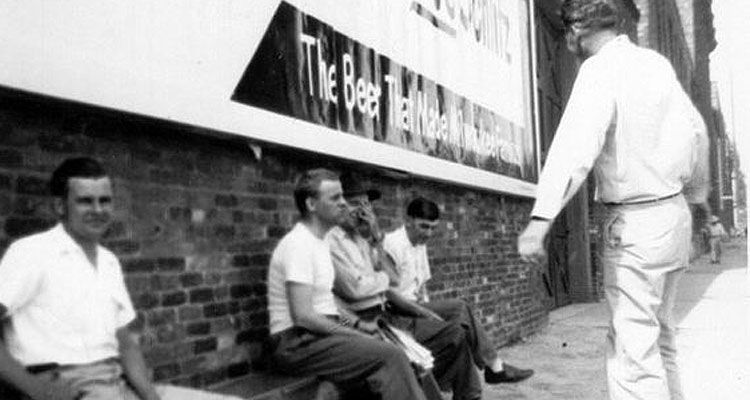Milwaukee’s long and sudsy brewing history has been enjoying a resurgence. In April, Pabst celebrated the opening of a new brewery in a long-abandoned church/tavern in its former downtown complex. While not exactly the “Bring PBR Home” pipe dream of a few years ago—the new Pabst Milwaukee Brewery focuses on craft and experimental brews only—Pabst is indeed brewing beer in Milwaukee for the first time since 1996. Then, just this week, the Historic Preservation Commission approved a permanent historic designation for two Gettelman Brewery buildings that were in danger of being demolished by MillerCoors to make room for a new parking lot. Like most everything these days—movies, television, ripped jeans for some reason—what’s old is new again.
But one footnote in the city’s beer-addled history that hasn’t enjoyed a reboot—a footnote that recently celebrated its 64th anniversary—is the Great Milwaukee Brewery Strike of 1953. On May 14 of that year, more than 7,000 workers from not one, not two, but six Milwaukee breweries—Schlitz, Pabst, Blatz, Miller, Gettelman, and Independent Milwaukee (maker of Braumeister)—walked out on their jobs. The result of months of futile contract talks, the strike was authorized by the United Brewery Workers Local 9 and wound up up lasting 76 days. For a stretch of that summer, Brew City wasn’t brewing.
The strike made national news. A Chicago Daily Tribune piece from May 15, 1953 detailed the workers’ demands:
John Schmitt, corresponding recording secretary of the local, said the union is seeking a reduction of the work week from 40 to 35 hours without loss of pay, and a wage increase to raise the weekly pay in the bottling and brewing departments from $80 and $82 respectively to $90.75. It also requests a uniform health and welfare plan and pensions.
Schmitt said that the reduced work week was necessary in order to keep up with increased productivity made possible by new machinery. He added “there are not 12 months of work for our people any more.”
According to the same story, no shortages were expected in town (“Beer depots and taverns have been stock piling for several weeks”), but things changed as the strike wore on. In a piece dated June 26, 1953, the Tribune reported that Milwaukeeans were—gasp!—drinking beer brewed outside of Milwaukee:
A canvass of neighborhood taverns today, as the strike of 7,100 members of local 9 of the C10 United Brewery Workers entered its seventh week, showed that beer brand names hitherto unknown to the natives have become saloon and package store bywords. One large distributor reported that his most popular selling brand right now is a beer brewed in Peru, Ind., a town of whose existence many Milwaukeeans until lately have been blissfully unaware.
The strike came to an acrimonious end when Blatz, acting alone, accepted the union’s demands. The other breweries followed suit, though Blatz was eventually booted from the Brewers Association for “unethical” business methods. Anheuser-Busch of St. Louis assumed leadership of the national beer market because of the strike; the following year, Schlitz president Erwin C. Uihlein had this to say at the company’s annual Christmas party:
“Irreparable harm was done to the Milwaukee brewery industry during the 76-day strike of 1953, and unemployed brewery workers must endure ‘continued suffering’ before the prestige of Milwaukee beer is re-established on the world market.”

